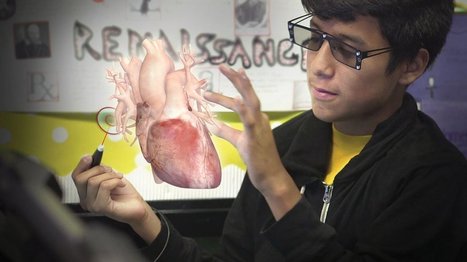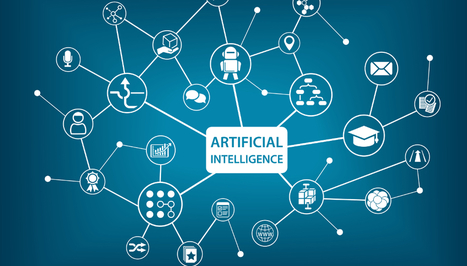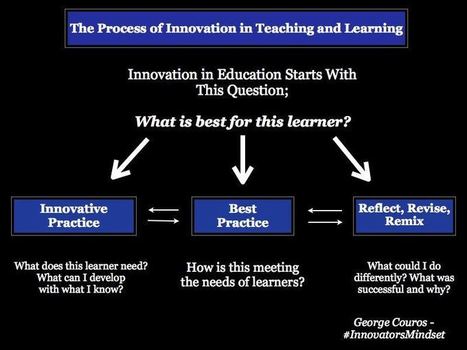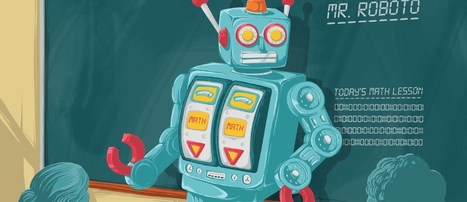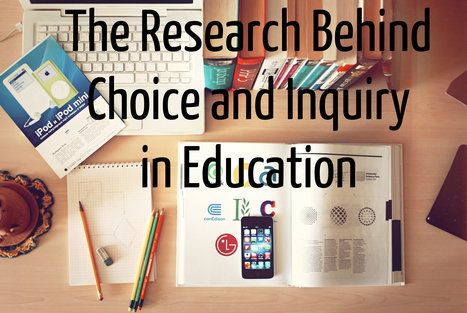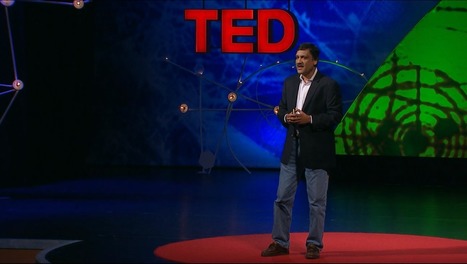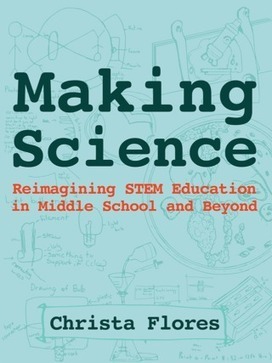Ask our team, “What’s new?” and you’ll hear about how we’re learning on the go with podcasts. Ask our teacher bloggers about new practices they’re trying in their classrooms and you’ll hear how their encouraging reflective learning with podcasts. At the start of a new school year, we think they are a great way to continue learning and stay engaged. So grab your headphones or sync the bluetooth, and get ready to listen and learn–here is our list of favorite podcasts you should check out to support your learning.
Get Started for FREE
Sign up with Facebook Sign up with X
I don't have a Facebook or a X account
 Your new post is loading... Your new post is loading...
 Your new post is loading... Your new post is loading...

Felipe Rincon's curator insight,
May 24, 2018 10:32 AM
“We need to engage our learners. They will only be engaged fully if they can actively participate in their learning. They won’t learn if they are not curious. The responsibility for this lies with the educator.”, I completely agree with this statement from the author, it is true that curiosity is an important aspect when it comes about education, a students that feels curious about an specific topic is more likely to be motivated to study it, so he/she can fully understand what is all that about, Educators need to figure out how to keep students motivated and curious about the topics they need to learn, and as the author mentions, technology can help us a lot.

magnus sandberg's curator insight,
May 25, 2018 5:03 AM
A great text with a brilliant headline. The headline carries a somewhat different message than the text below, at least to me. So my recommendation is to read it again and think about what it tells you, then read the rest.

Carlos Fosca's curator insight,
November 23, 2017 5:06 PM
"Taken together, how designers think and act make for design thinking, a human-centered approach to creative thinking and problem solving. Thinking and acting as a designer and, in turn, employing design thinking are powerful ways to encourage people to become change-makers in education." (WISE - IDEO, 2017) 
Kim Flintoff's curator insight,
November 30, 2017 6:27 PM
Taken together, how designers think and act make for design thinking, a human-centered approach to creative thinking and problem solving. Thinking and acting as a designer and, in turn, employing design thinking are powerful ways to encourage people to become change-makers in education.

Helen O's comment,
August 18, 2017 3:59 AM
One of the best examples of active AR engagement I saw at Toy Fair was Crayola's Virtual Studio Pro coloring sets https://invisible.toys/crayola/

Emily Sandoval's curator insight,
May 19, 2020 4:53 PM
I am a firm believer that virtual reality can enhance learning. Like the article states, virtual reality can help surgeons practice surgeries before doing them in real life. It can also help students work from home, attend science labs without the mess or pressure, and it can be used to animate history. I look forward to seeing virtual reality being used more often in the classroom. Regardless of what the critics say, it can be used for much more than just entertainment purposes.

Aris P. Louvris's curator insight,
August 25, 2014 6:40 AM
Η επιστήμη της Πληροφορικής: το μέλλον της εκπαίδευσης 
ManufacturingStories's curator insight,
August 26, 2014 12:49 PM
For more resources on STEM Education visit http://bit.ly/1640Tbl |

Stephanie Elise Gonzalez's curator insight,
February 2, 2020 1:21 AM
Given the importance of relationships in human development, AI will augment rather than replace the work of educators in many ways. We’ll all have to get better at collaborating with teams that include smart machines.

Francesca Gonzalez's curator insight,
May 28, 1:23 PM
AI learning how to diagnose learning differences, medical conditions, and vision problems is going to be extremely beneficial to both educators and parents. Hopefully it can help identify those issues and the students can receive help as early as possible.

Kim Flintoff's curator insight,
February 2, 2018 7:23 PM
“Imagine a high school student in your district. Her class is learning about muscles, but instead of watching a video or reading about it in a book, she can move a virtual arm and see an exposed bicep muscle contract. Are engines her thing? She can safely experiment with a virtual torque wrench in a mechanics class. It sounds powerful, doesn’t it? Not to mention effective.“

Sara Astros Rojas's curator insight,
October 11, 2017 11:55 PM
Technology is part of our daily lifes, and we need to integrate it in our classroom, since foster creativity and innovation and encourage the development of new ideas that reach thousands through social media

Alexander Daron's curator insight,
October 15, 2017 11:06 AM
I chose this resource because I agree 100% with the title. When I have used different technology and different programs with my students, they love it. Students in todays society get bored sitting in class with teachers talking to them. They want to be up and moving around working with technology to help them learn. I hope that this article will prove to our teachers that they must use technology for the benefit of their students. I have been in special education classrooms where autistic students were benefiting so much from programs on the iPad. Implementing these practices is so important to our students. 
Alexander Daron's curator insight,
October 15, 2017 11:42 AM
I chose this resource because students can be so creative when using technology in their education. They aren't restricted, and can create assignments or projects that make sense to them. They aren't restricted, and don't have to do exactly what the teacher tells them. I hope that this article will come true for many schools around America. Too often, teachers are afraid to let students be creative with the use of technology, because it is outside of their comfort zone to let the students venture off and create their own learning opportunities.

Emily Sandoval's curator insight,
May 19, 2020 4:53 PM
I am a firm believer that virtual reality can enhance learning. Like the article states, virtual reality can help surgeons practice surgeries before doing them in real life. It can also help students work from home, attend science labs without the mess or pressure, and it can be used to animate history. I look forward to seeing virtual reality being used more often in the classroom. Regardless of what the critics say, it can be used for much more than just entertainment purposes.
|




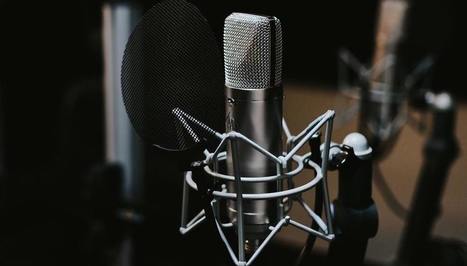


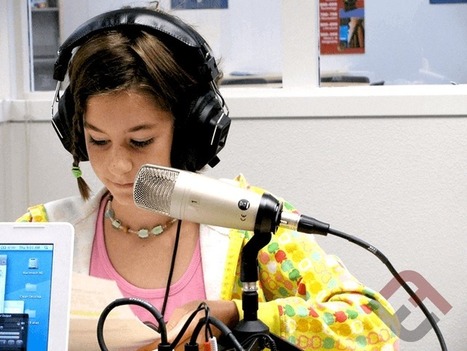
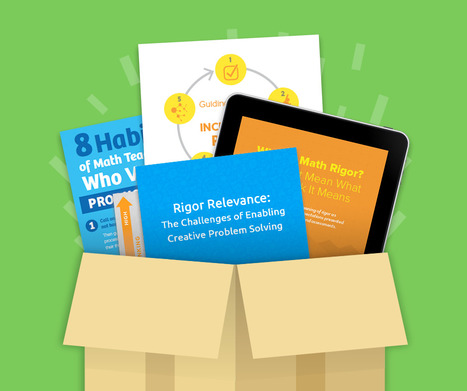
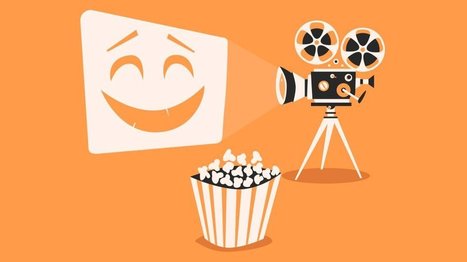

![[PDF] Thinking & acting like a designer: How design thinking supports innovation in K-12 education | iPads, MakerEd and More in Education | Scoop.it](https://img.scoop.it/1N5gbB-s78kmmrEonqZOYTl72eJkfbmt4t8yenImKBVvK0kTmF0xjctABnaLJIm9)




